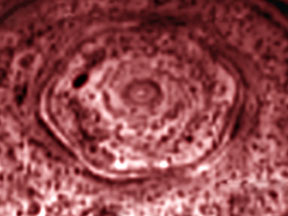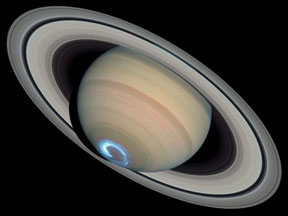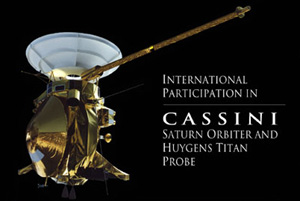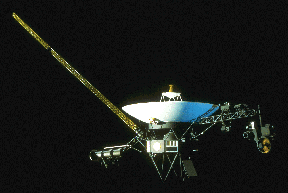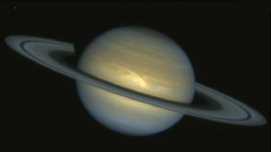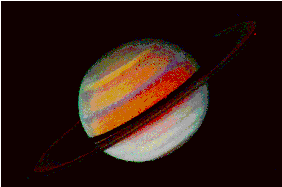Click on image for full size
Image courtesy NASA/JPL/University of Arizona.
Saturn's Strange Hexagon
Astronomers have discovered a strange shape in Saturn's atmosphere. The shape is a hexagon. The hexagon is near Saturn's North Pole. Scientists aren't quite sure why Saturn has the hexagon shape in its atmosphere.
The Cassini spacecraft flew over Saturn's North Pole in October and November 2006. It gave astronomers their first good look at Saturn's poles. Cassini took pictures of the hexagon. The pictures show infrared "light" coming up from inside of Saturn, which is hot inside. Now scientists are trying to figure out what causes the hexagon.
This isn't the first time astronomers have seen the hexagon. The Voyager spacecraft was the first to spot it in the 1980s. The Hubble Space Telescope also took pictures of it. The pictures from Voyager and Hubble were not very clear, though, because they weren't looking straight down on the pole the way Cassini did. The older pictures do tell us that the hexagon has been around for at least 20 years, though.
Because the pictures from Cassini were taken with infrared "light", they let us see through Saturn's top layer of clouds to a place deeper down in the planet's atmosphere. The hexagon is actually about 75 kilometers (47 miles) below Saturn's top layer of clouds that we normally see. In the picture on this page, light colored areas are places where Saturn's atmosphere is mostly clear, and we can see lots of heat (infrared "light") coming up from inside Saturn. Darker places on the picture are actually the shadows of clouds. The clouds block the infrared "light". These clouds are about 75 to 100 kilometers (47-62 miles) lower in Saturn's atmosphere than the top layer of clouds we normally see with visible light.
So what makes the hexagon? Scientists aren't really sure yet. They think it is very odd. One theory is that it is some sort of wave in Saturn's atmosphere. Scientists hope that more data from Cassini may help them solve this mystery. Stay tuned!


